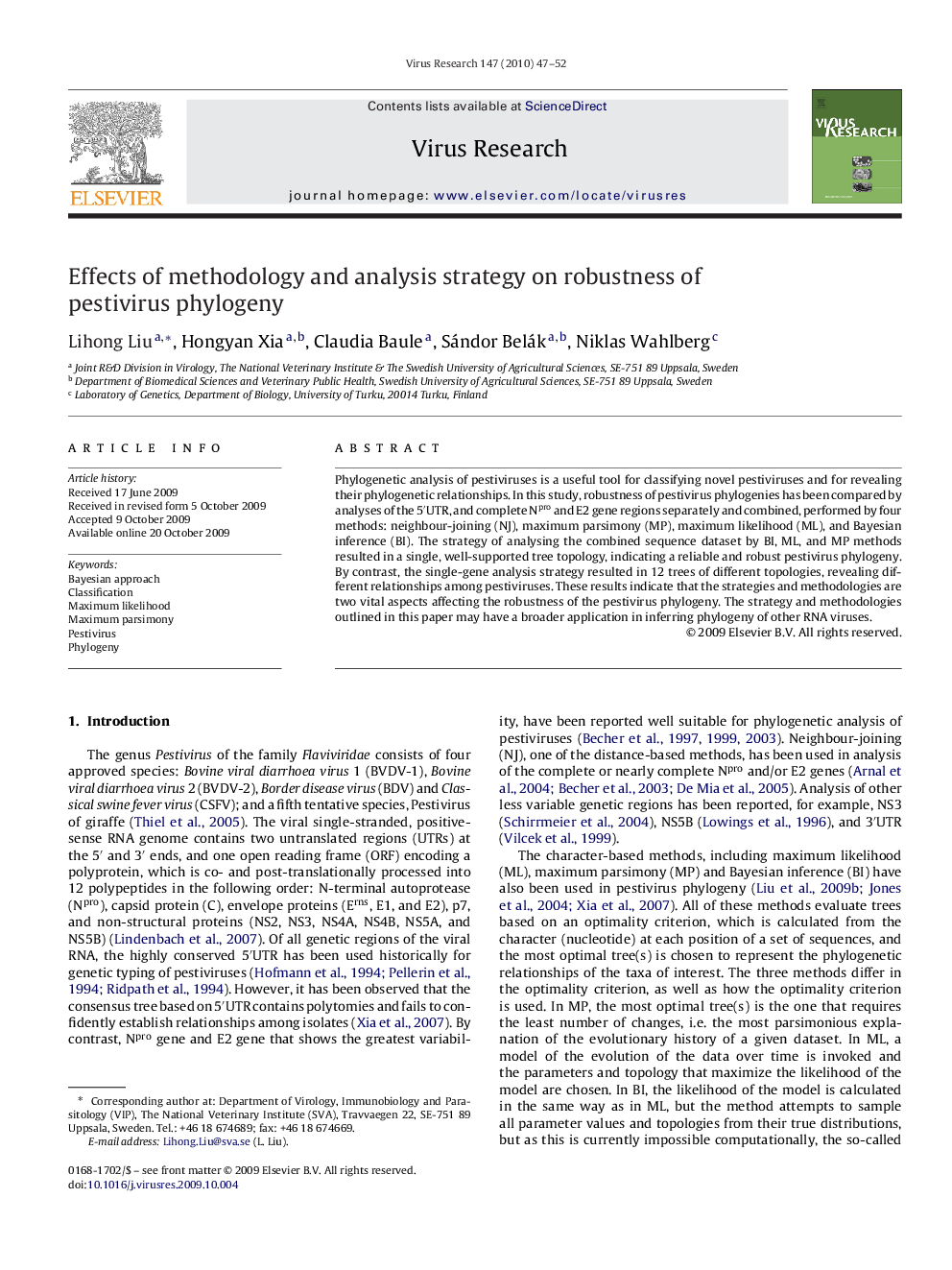| Article ID | Journal | Published Year | Pages | File Type |
|---|---|---|---|---|
| 3429977 | Virus Research | 2010 | 6 Pages |
Phylogenetic analysis of pestiviruses is a useful tool for classifying novel pestiviruses and for revealing their phylogenetic relationships. In this study, robustness of pestivirus phylogenies has been compared by analyses of the 5′UTR, and complete Npro and E2 gene regions separately and combined, performed by four methods: neighbour-joining (NJ), maximum parsimony (MP), maximum likelihood (ML), and Bayesian inference (BI). The strategy of analysing the combined sequence dataset by BI, ML, and MP methods resulted in a single, well-supported tree topology, indicating a reliable and robust pestivirus phylogeny. By contrast, the single-gene analysis strategy resulted in 12 trees of different topologies, revealing different relationships among pestiviruses. These results indicate that the strategies and methodologies are two vital aspects affecting the robustness of the pestivirus phylogeny. The strategy and methodologies outlined in this paper may have a broader application in inferring phylogeny of other RNA viruses.
